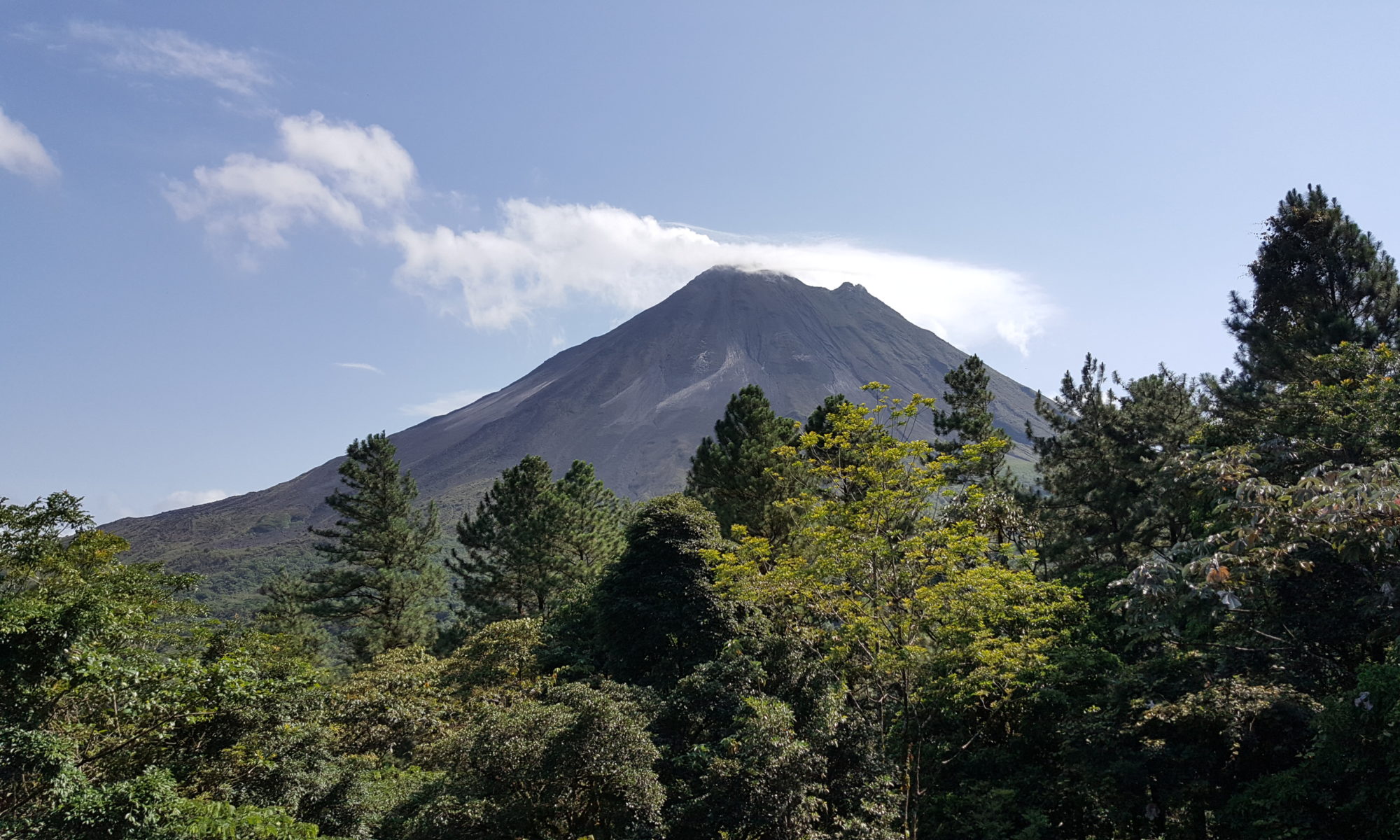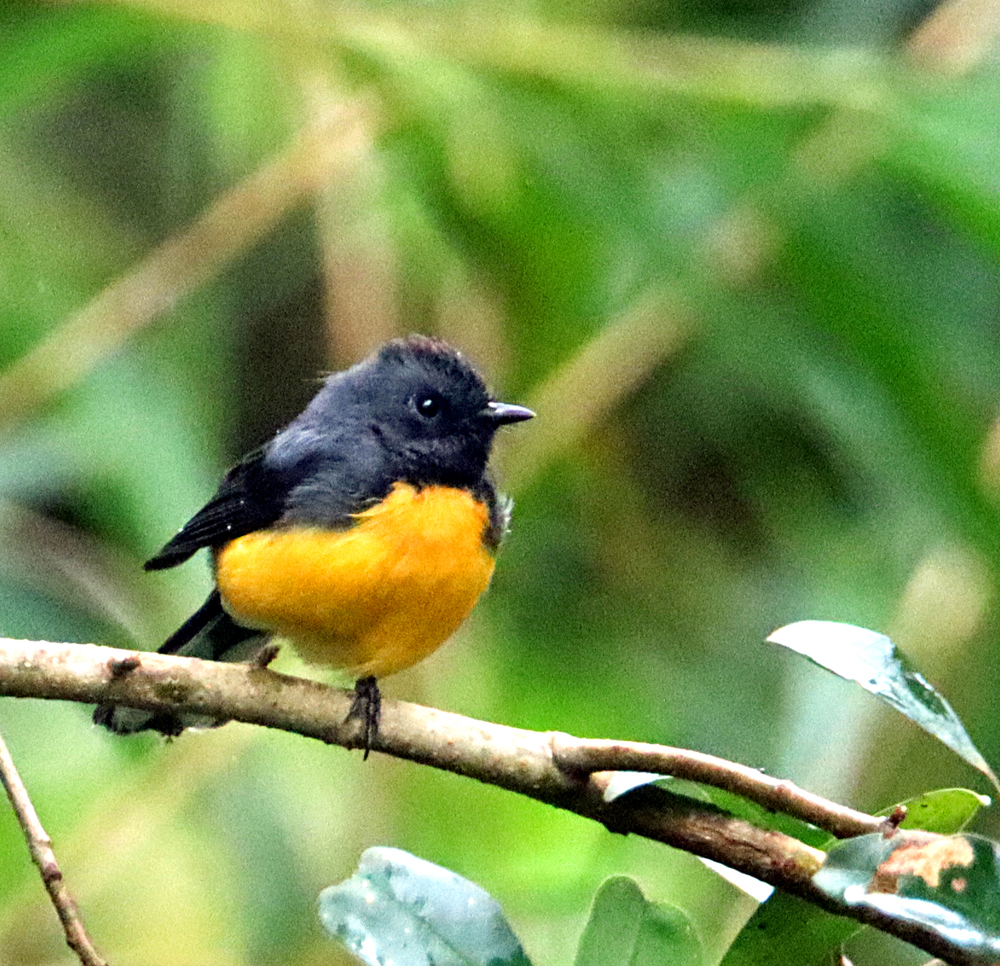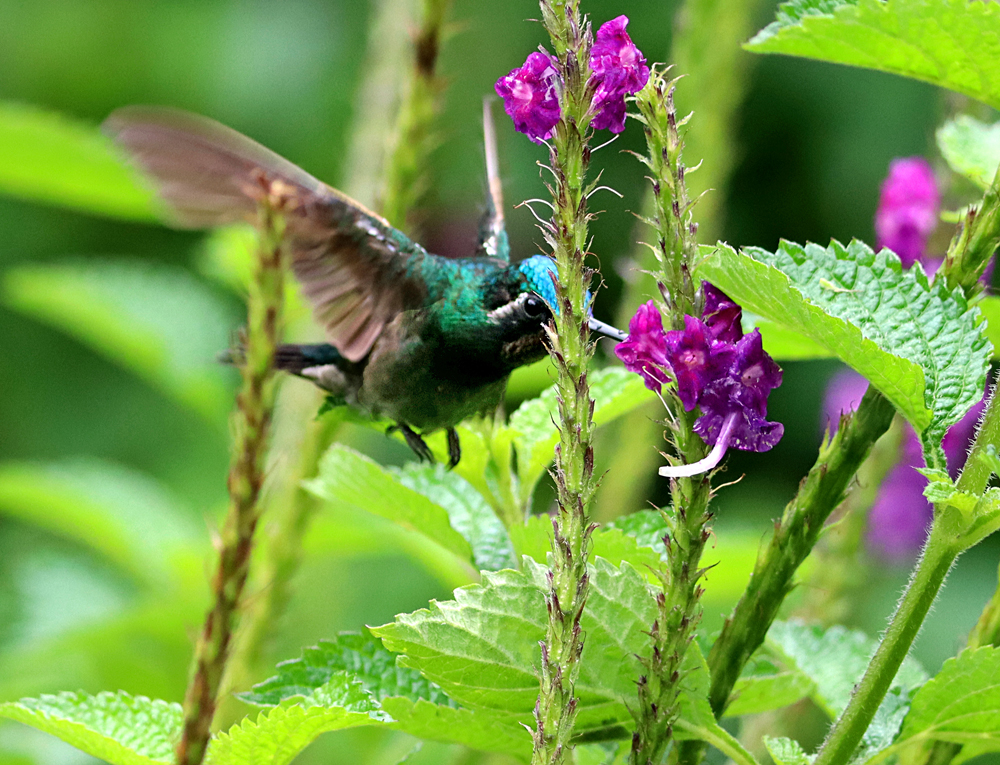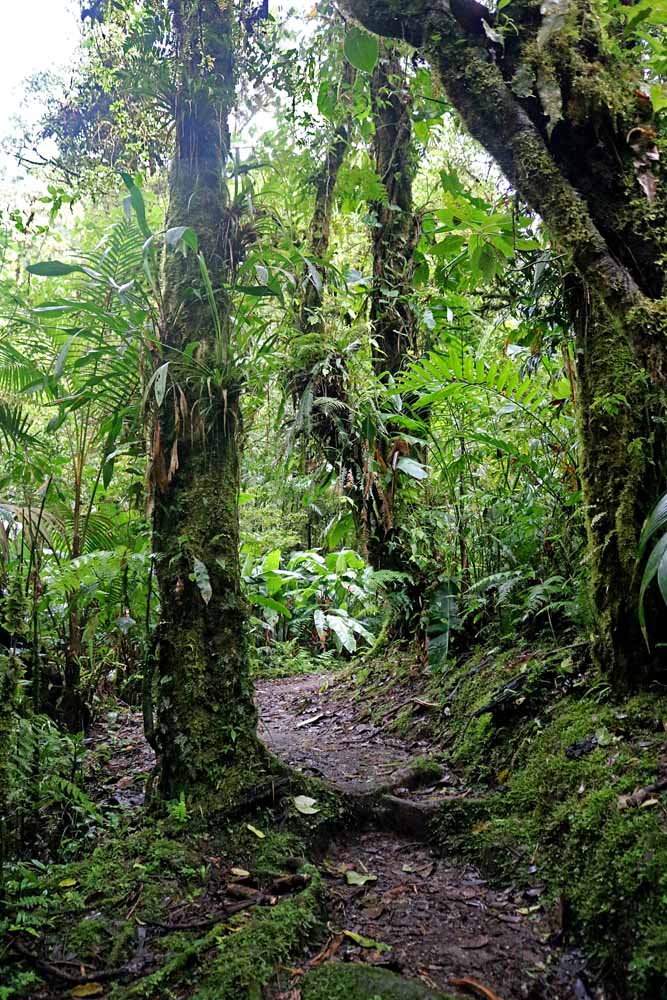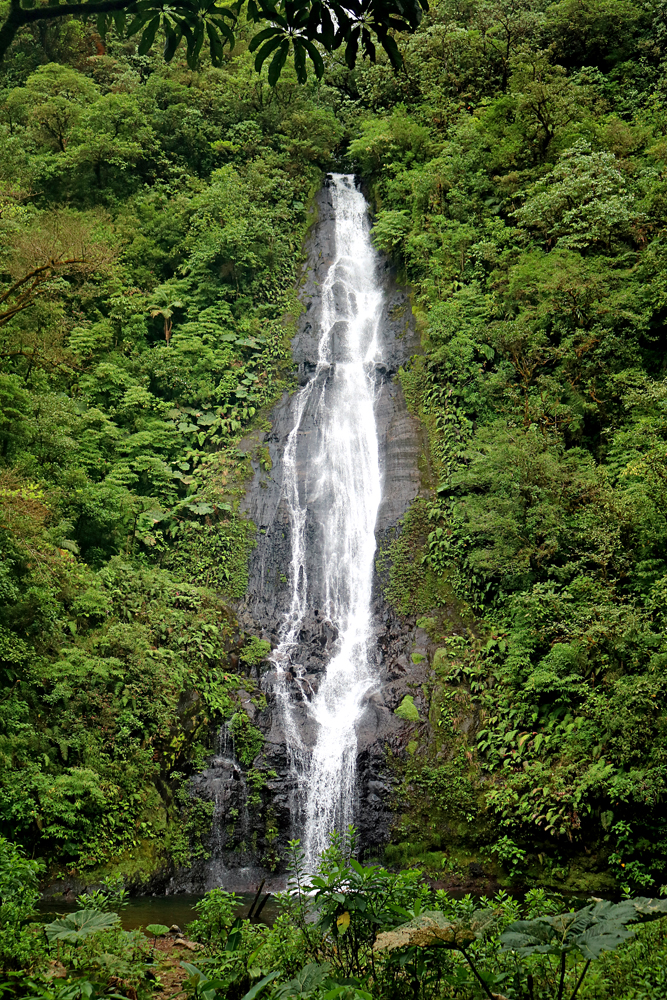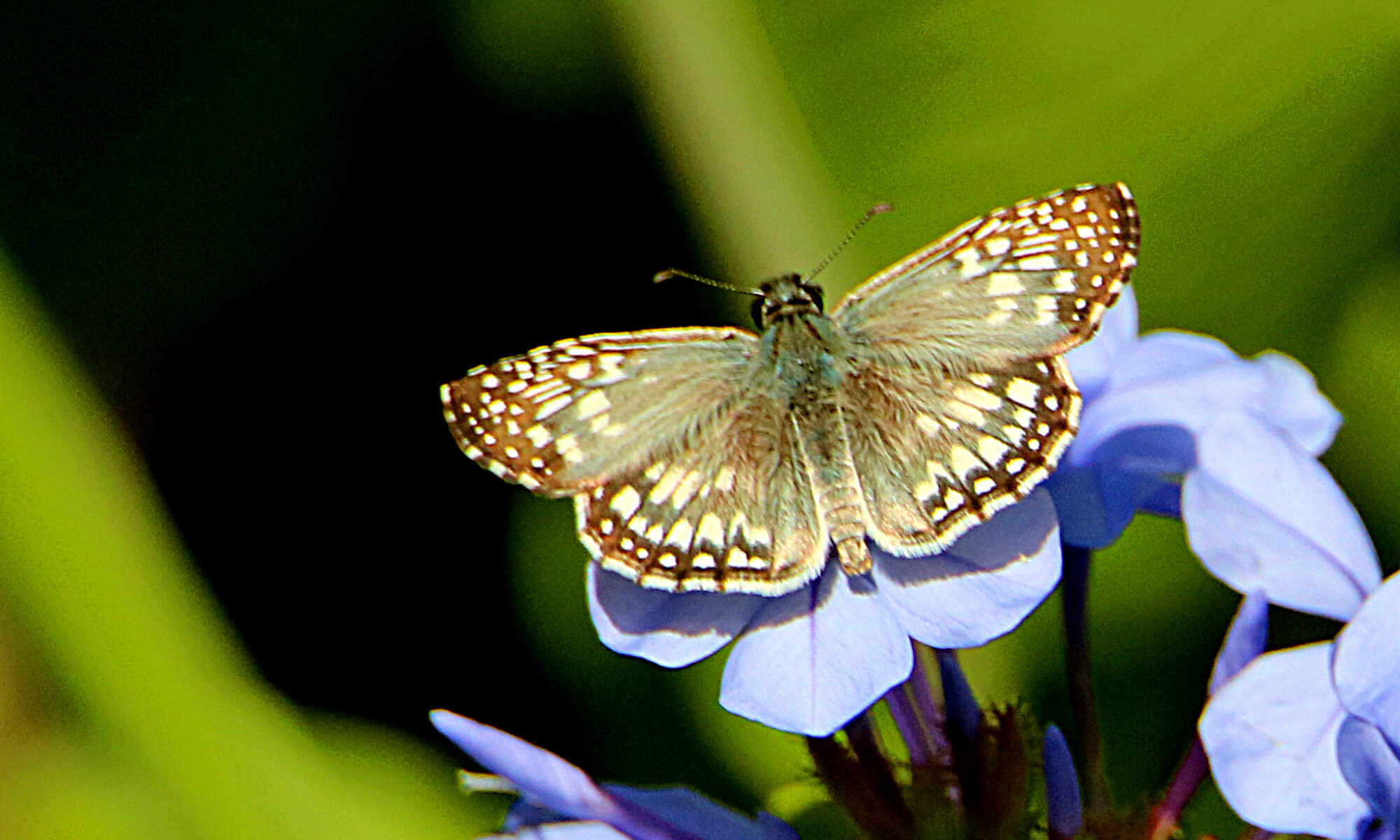From El Silencio, I shared the Trogon & Chlorospingus first and then the Hummingbirds and now here’s the “leftovers!” 🙂 Actually they aren’t all bad photos, but not as interesting as the other earlier-shared 4 birds. Six here, making a total of only 10 birds this trip compared to 23 the previous visit to El Silencio. The number of birds are way down everywhere this year! And no one has a good explanation.
Continue reading “And the Other Birds”2 Dazzling Hummingbirds!
In my brief time at El Silencio Lodge this trip (last month) I managed to photograph two of their several mountain hummingbirds either in the rain or in-between rains: The Lesser Violetear, Colibri Cyanotus (linked to eBird) and the Purple-throated Mountain-Gem, Lampornis [castaneoventris] calolaemus (also linked to eBird). And you can see some of my other shots of both of these species in my galleries:
- Lesser Violetear GALLERY – Found in both Central & South American mountains
- Purple-throated Mountain-Gem GALLERY -Only in Central American mountains
Now find below three shots of each species. Note that the male & female of the Violetear are identical thus not identified while the male & female of the Purple-throated are different and I did get shots of both in the latter! Plus I have here one shot of each species flying/hovering/eating! 🙂
Continue reading “2 Dazzling Hummingbirds!”Common Chlorospingus or . . .
Middle America Bush-Tanager, Chlorospingus flavopectus, which is sporting a new name found only in my new 2023 Princeton Field Guide, Birds of Costa Rica (and online). And that is why I try to always have the latest bird guide because there are always changes in the names. eBird is currently using both names and even “Middle America Chlorospingus” as another option. This particular one is found only in Central America with a slightly different one in South America which I suspect is why the name change. I photographed this one from my porch chair at my cabin in El Silencio Lodge & Reserve last month. I’ve already featured the Collared Trogon and now this one from El Silencio and may do just one more bird post on all the others I photographed to keep from stringing the El Silencio posts out too far. 🙂 Or maybe one on Hummingbirds and one on all the others! 🙂 Here’s 3 of my porch shots of this nice little bird by whatever name! 🙂
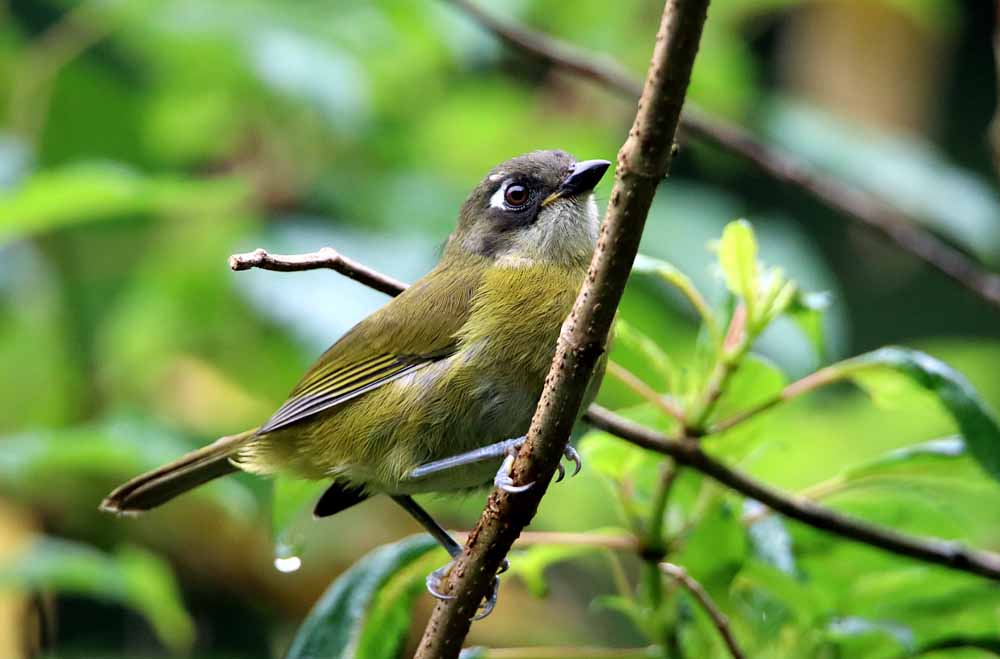
Red-tailed Squirrel
Though I tend to see more Variegated Squirrels in Costa Rica, this species is my second “most-seen” of the 4 Squirrels of Costa Rica. And I’ve photographed all 4 species as seen in my CR Mammals Gallery (scroll down to S’s for Squirrels) or you may prefer to go directly to my Red-tailed Squirrel Gallery where I have photos from 6 different locations in Costa Rica counting this new one. And interestingly, I’ve seen them on both slopes (Pacific & Atlantic) and in both lowlands and mountains, so they seem to be almost as universal here as the Variegated Squirrel. 🙂 Here’s two shots of a Red-tailed I found at El Silencio Lodge, Bajos del Toro . . .
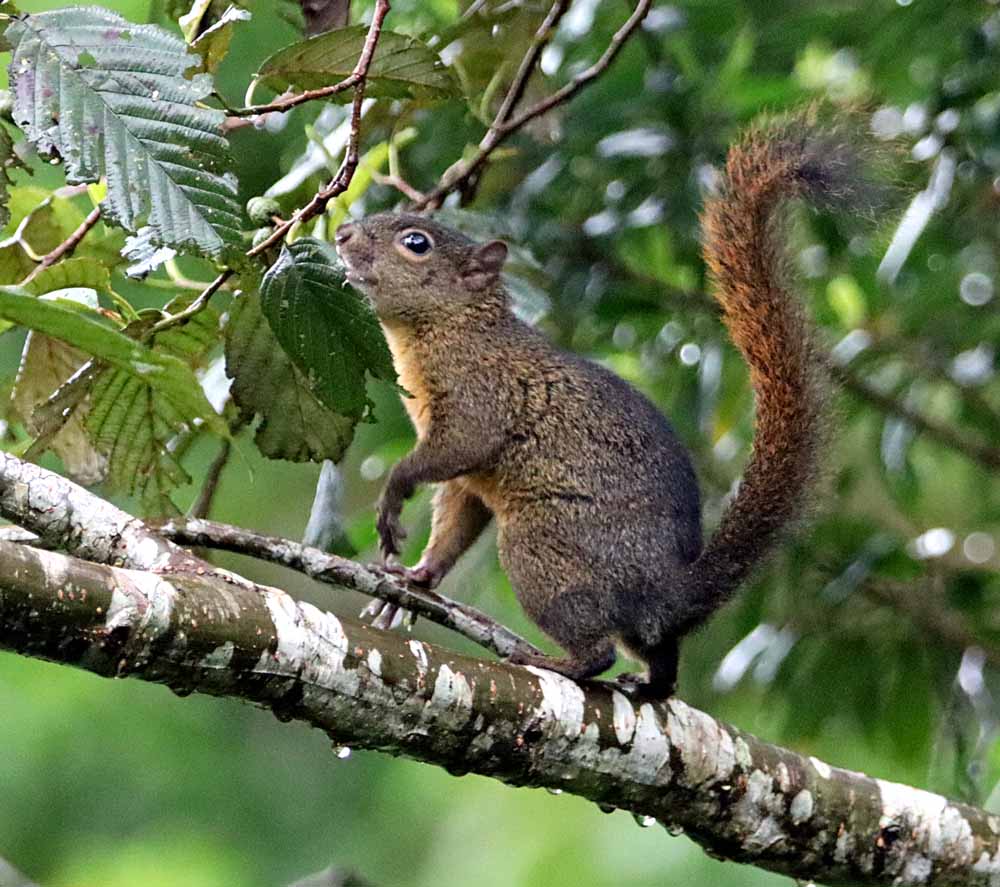
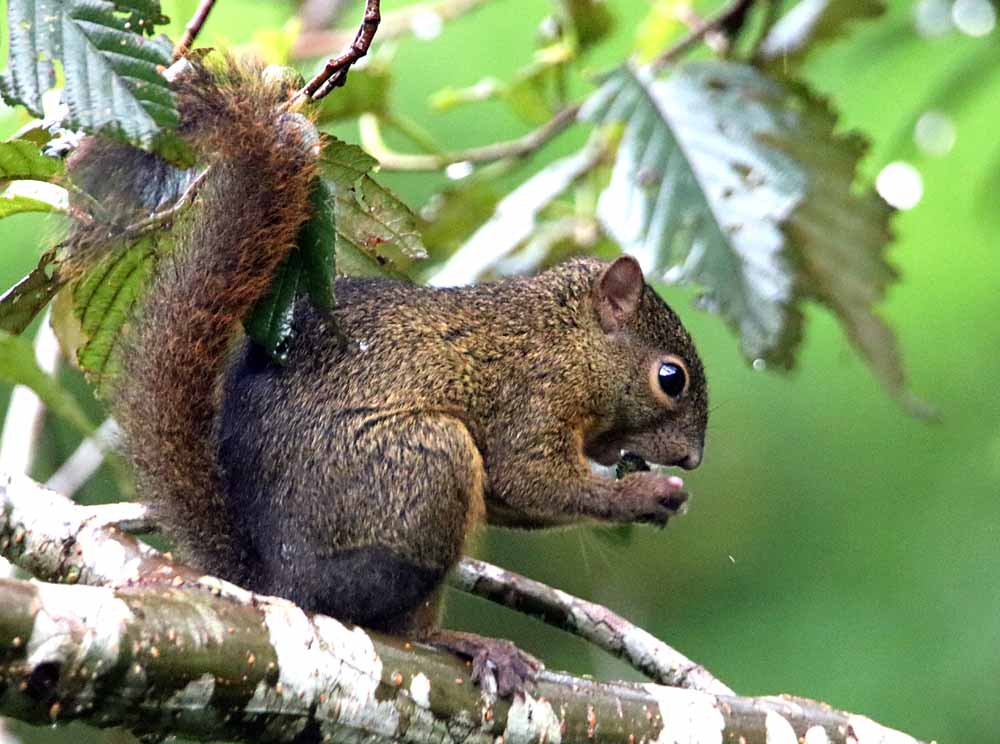
See more photos of these and a lot of other wildlife in my 2023 El Silencio Lodge TRIP GALLERY.
¡Pura Vida!
Mystical Footpath to Waterfalls
I had only one full day (along with two partial days) at El Silencio Lodge last month and on that full day it rained until after 2 pm, so it was nearly 3 pm before I headed out on what the lodge sometimes calls “Mystery Trail” for my 2 km hike mostly uphill to the three beautiful waterfalls that I shared photos of yesterday, then 2 km back to cabin before dinner.
But as is often the case, the journey is as beautiful or life-changing as the destination! And this was no exception! Every hiking trail is a “Mystical Footpath” to me and when I have more time than I did that day, I find exciting insects and lizards along every trail and in some places birds, monkeys, sloths and other wildlife! But this report is more on the trail and many streams along the way found in a photo gallery below this one pix. In the gallery you can click an image to see it larger and full-width or by clicking the first image you can go through all 12 as a manual slide show that you click through my story in pictures! Enjoy views from my Cloud Forest Hike of last month . . .
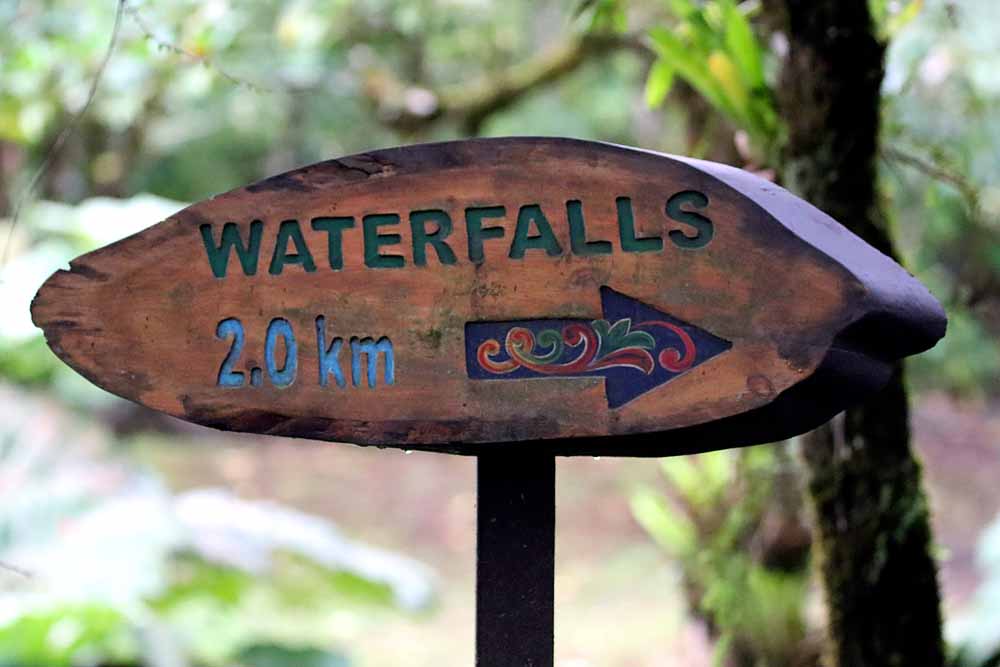
3 Waterfalls at Lodge
The three falls on the lodge property rival some of the big commercial falls in and around the little town of Bajos del Toro where there are 31 waterfalls you can visit! But these lodge falls are assuming that you are willing to walk 2km, mostly uphill to get to them and then they are fairly close together once you get to the first, which is Melody Falls. Then hiking back to your cabin is another 2 km, though mostly downhill and a lot easier and faster! 🙂 I was hiking solo, thus I did not wade into the stream for a better view of Melody Falls. Unfortunately I have history of slipping and falling on wet rocks! 🙂 So all of these photos were made from the dry trail or flat land by the three falls. Tomorrow I will share a few pix of the streams and other views along the trail to and from the falls which I think is almost as beautiful or interesting. But here’s one pix of each waterfall with it’s sign to identify it. And it works better if you go to the website to see them, so after the first one in emailed version, a link to the other photos in the blog post online . . .
The Silence Waterfall
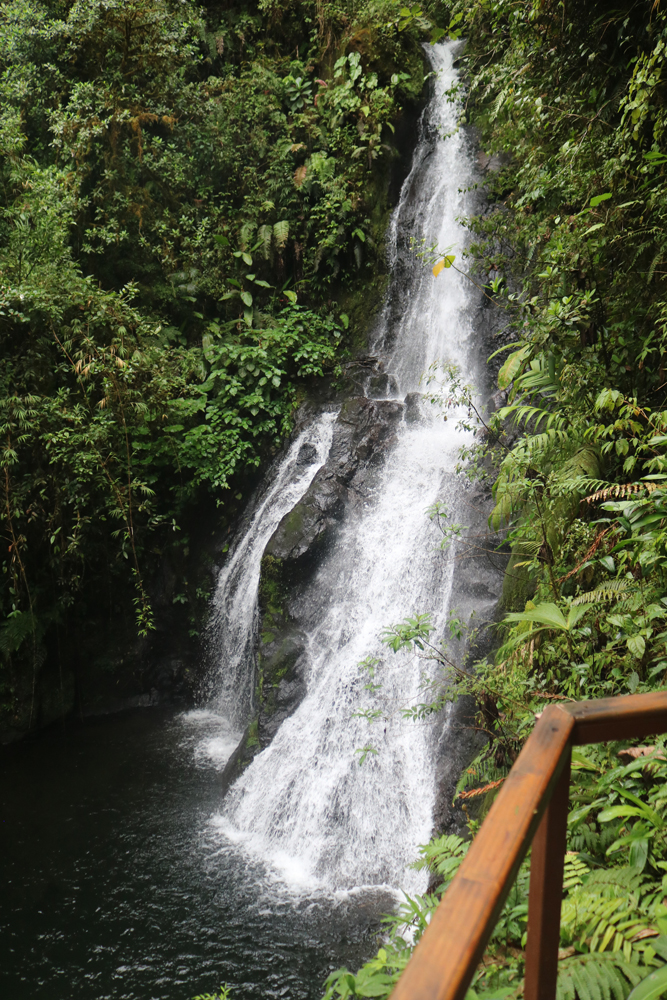
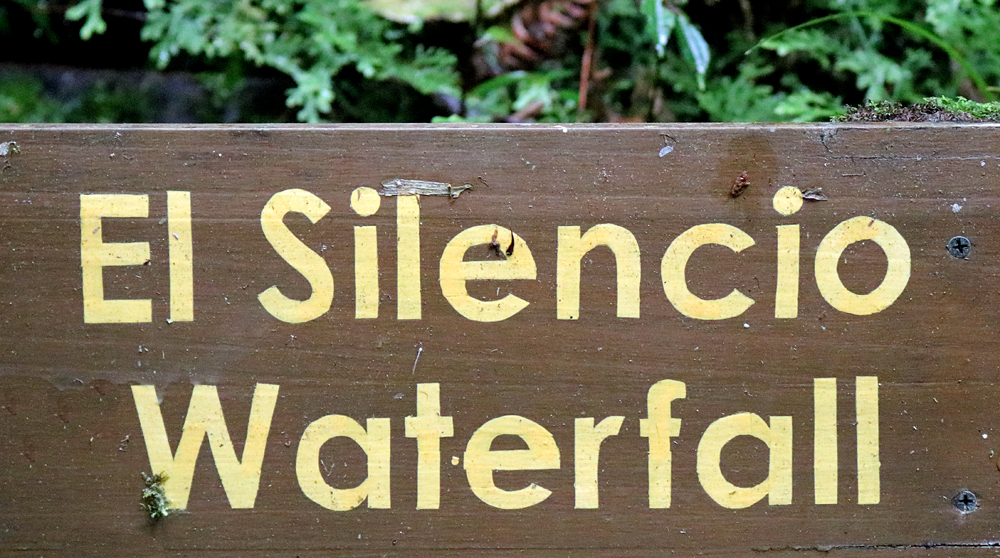
Handsome Collared Trogons
FIRST OF 7 REPORTS FROM MY RECENT TRIP TO EL SILENCIO LODGE, BAJOS DEL TORO, ALAJUELA, COSTA RICA.
I use the word “handsome” because to me it better describes all Trogons, male and female, than “beautiful,” (though they are beautiful too, especially the Quetzal!) and here I have a photo of a male and a female Collared Trogon (link is to eBird info) which was earlier combined with one called “Orange-bellied Trogon,” another name change keeping us old men birders on our toes! 🙂
I’ve seen this one in six places in Costa Rica, all shown in my CR Collared Trogon GALLERY. And there are more photos of these 2 at El Silencio in my “trip gallery:” 2023 El Silencio Lodge. A tropical bird found only in Central America and northern South America. And this one is always in the mountains or cloud forests while different species of Trogons are seen in the lowland rainforests.
My latest book, Princeton Field Guide to Birds of Costa Rica, lists 9 species of Trogons in Costa Rica including the Resplendent Quetzal. I have photos of 7 of these in my Costa Rica Birds GALLERIES (just 2 more to go!). 🙂 Scroll down past the hummingbirds, water birds, hawks and owls to the Trogons. 🙂
I’m showing the female of the Collared Trogon here first because she is one of the very few distinctively brown birds and I like brown! 🙂
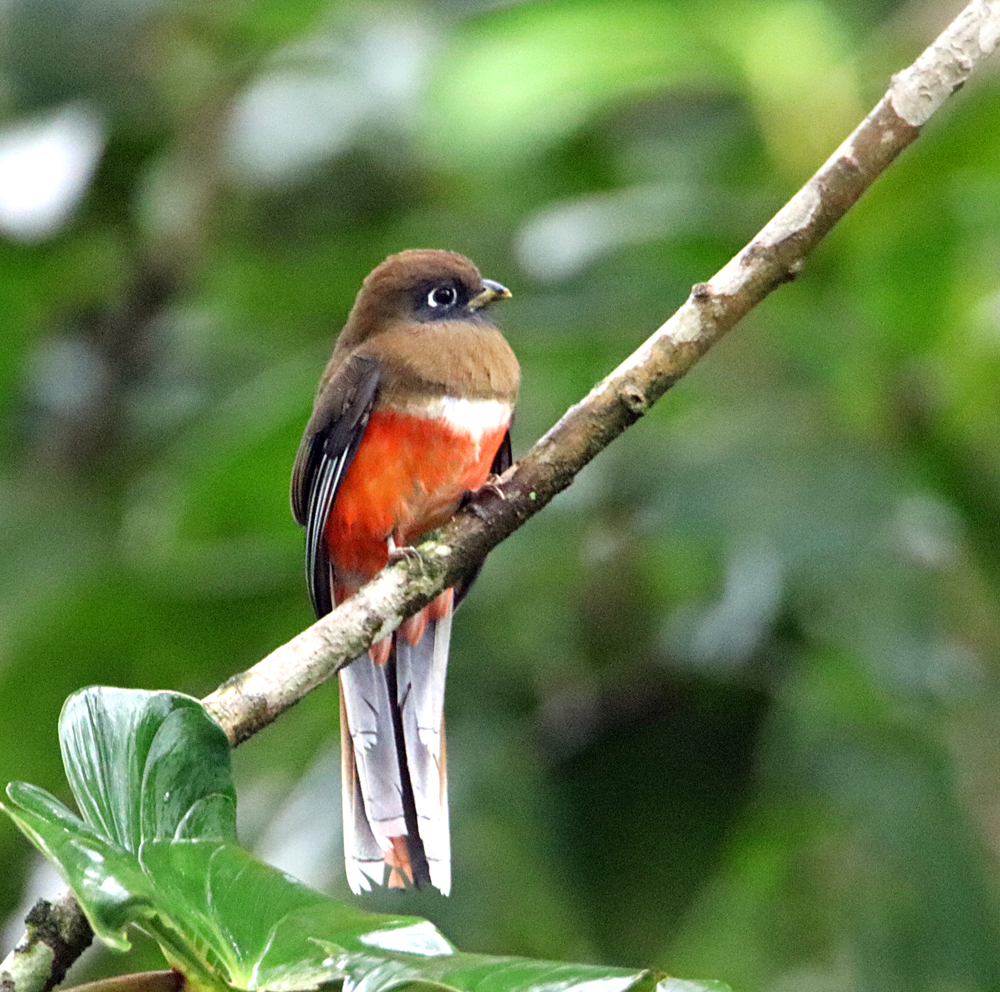

¡Pura Vida!
Sorry for the delayed reports on El Silencio, but I got two weeks ahead on my blog posts during the last trip (Esquinas Rainforest Lodge) and didn’t want to start sending two posts a day! I hope you enjoy the variety of photos I will be sharing from El Silencio and see why it is another one of my “favorite places” here in Costa Rica! 🙂
And after 7 days of El Silencio photos I will be back to pix from my garden and neighborhood here in Atenas! 🙂 Next trip is September 18 to the Caribbean side of Costa Rica which is totally different from the mountains! 🙂 And I’m going to save those dates for “live” reports daily from the Caribe! 🙂
And if you want to learn more about El Silencio, see their website: El Silencio Lodge. It is an upscale lodge that costs more than most I visit, but the owner likes my photo books and gave me a free night this time! 🙂
¡Pura Vida!
Tallest Agave I’ve Ever Seen!
For years this has been on the hill above my house in the yard of “the big house,” where my former landlord lived and is now rented to a wonderful young couple. And I’m pretty sure it is one of the several species of Agave and my gardener called it an Agave. But it could be something else. I first called it a “yucca” which the garden says it is not. 🙂
Over more than 8 years here the flower has never gotten that tall! Sorry I didn’t ask someone to stand by it for comparison. It is taller than two men or more that 12 feet (3.7 meters) I’m sure! And maybe even equal to tree men or 18 feet! Shooting from my yard down the hill it took 4 photos to make this vertical pano! 🙂 Another fun tropical anomaly! 🙂

in my backyard reaching for the sun! 🙂
I tried to identify it online and the closest match (not exact) was to the Tequilana Agave, grown mostly in Mexico and used to make Tequila! 🙂
¡Pura Vida!
Tropical Checkered-Skipper
I have seen this one 4 times within the last year only in my garden. See all the different views and looks in my Tropical Checkered-Skipper GALLERY.
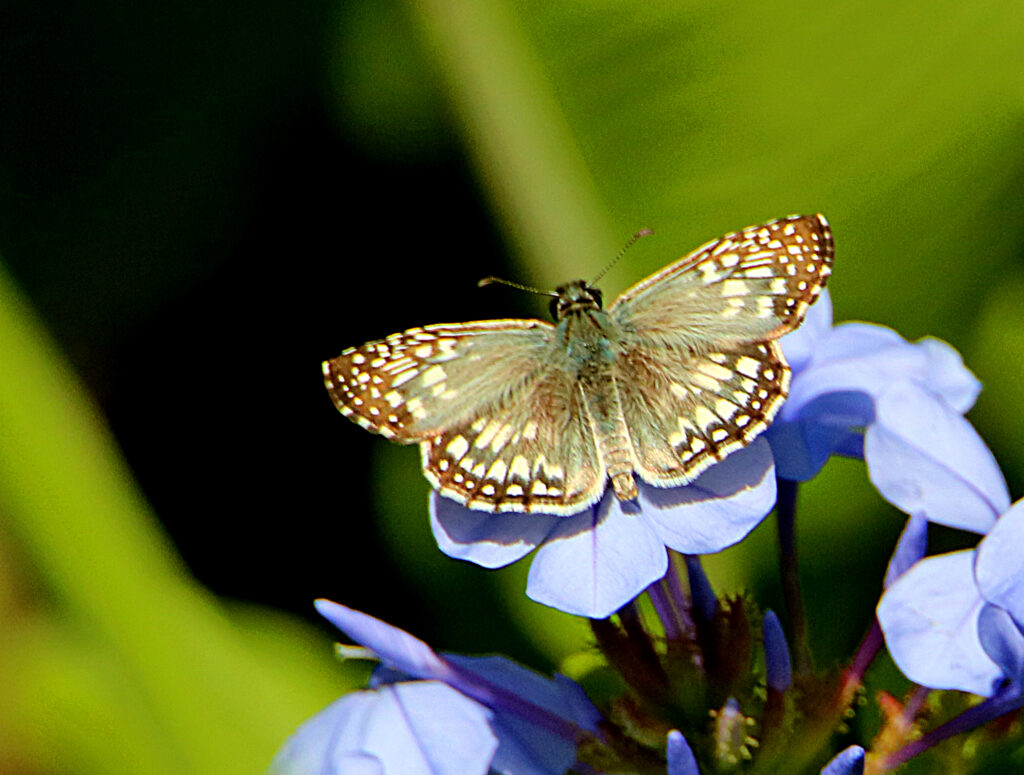
¡Pura Vida!
Gray-capped Flycatcher
This bird is becoming more common this year, while overall I have fewer birds of any species. I think he is a handsome flycatcher! 🙂 Two shots:
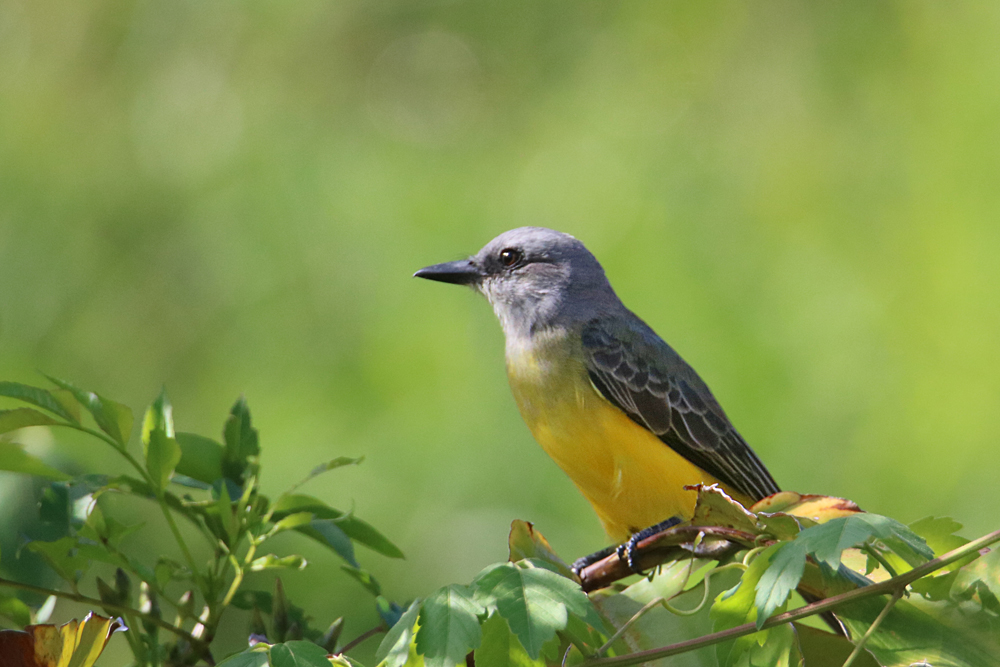
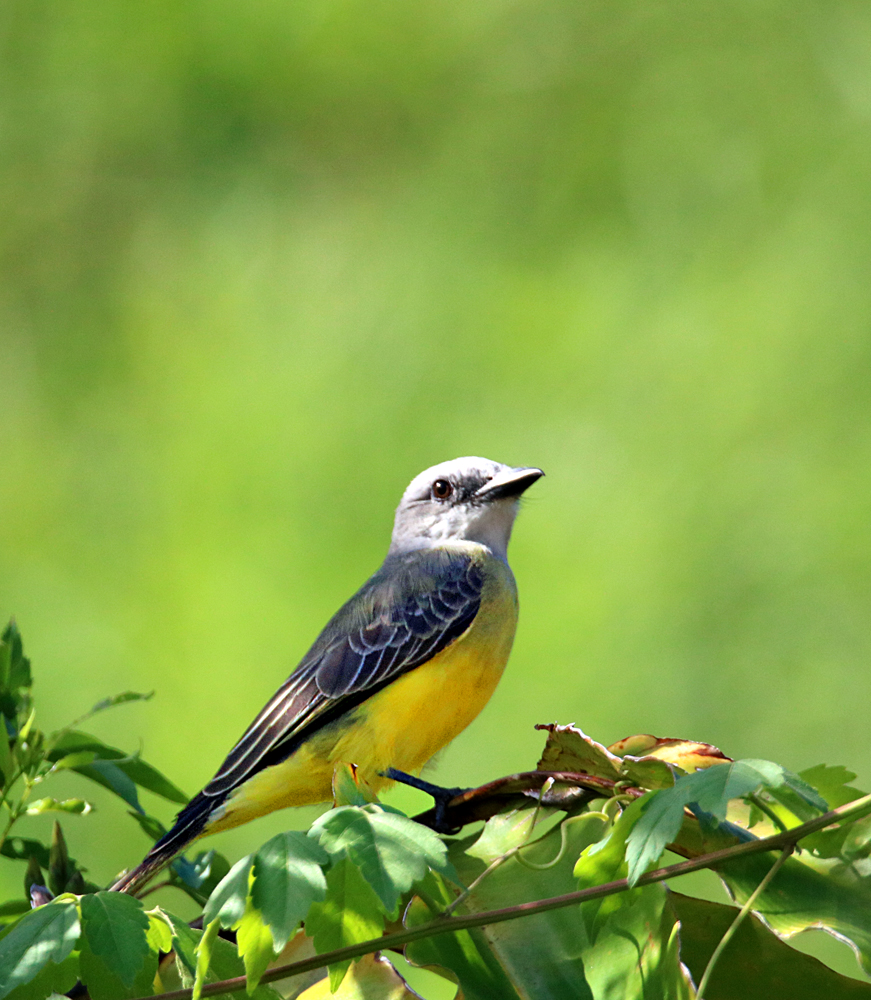
My Gray-capped Flycatcher GALLERY.
¡Pura Vida!
